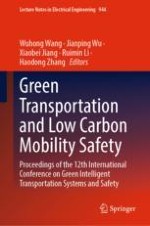2023 | OriginalPaper | Chapter
An Agent-Based Cellular Automata Model for Urban Road Traffic Flow Considering Connected and Automated Vehicles
Authors : Wang Jinghui, Lv Wei, Jiang Yajuan, Qin Shuangshuang, Huang Guangchen
Published in: Green Transportation and Low Carbon Mobility Safety
Publisher: Springer Nature Singapore
Activate our intelligent search to find suitable subject content or patents.
Select sections of text to find matching patents with Artificial Intelligence. powered by
Select sections of text to find additional relevant content using AI-assisted search. powered by
